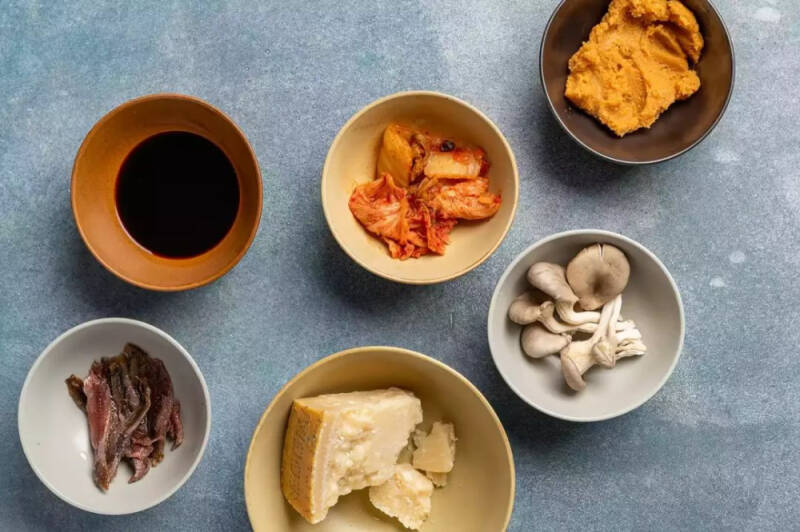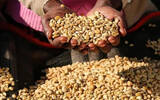Sweet, sour, bitter, salty and fresh, will there be umami flavor in coffee? Why can't you taste the umami in your coffee? How to feel the taste of coffee?
When it comes to describing the taste of food, sweet, sour, bitter and salty, our tongues all have different taste receptors to perceive and identify them. But as far as coffee is concerned, people usually only describe it in terms of acidity, sweetness, bitterness, saltiness and so on. These four flavors are also the types of taste that we can most easily taste and detect in coffee.

With the development and popularization of boutique coffee, the flavor description language system began to enrich, and the adjective "fresh" occasionally appeared in the industry and became the highlight of some coffee products. For example, the description "fresh" was seen on the package of a packet of Panamanian rosy summer coffee beans on the front street, which makes people wonder, can the coffee really taste delicious?
What is the delicious taste?
Kikumi Ikeda, a professor at Imperial University in Tokyo, Japan, is considered to be the first person to describe delicacy as an independent concept. He revealed the scientific nature of delicacy from the micro world in 1908. It is said that he noticed a very unique and distinct flavor in a broth, and firmly believed that there must be such a "flavor molecule". After a long process of research, extraction and separation, he found that the delicious taste was the result of free glutamic acid, and finally succeeded in finding the originally suspected "flavor molecule"-glutamic acid from kelp.
Fresh taste has always been a relatively abstract concept. The English word umami for "fresh taste" is actually evolved from the combination of the Japanese words umai (delicious taste) and mi (taste), so that for a long time, when people talk about fresh taste, they only say that it is a kind of delicious taste.

As the fifth flavor, "fresh" is usually associated with food cooked with ingredients such as meat, fish, shellfish and certain fungus plants. It is not usually as sour, sweet, bitter and salty as it can be read clearly and quickly. It belongs to a more complex flavor perception.
Will there be "fresh taste" in the coffee?
Scientific research shows that all foods contain certain levels of glutamate, including coffee. But in coffee, if you want the tongue receptor to recognize a taste, the number of molecules must reach a certain threshold, that is, when the number of fresh flavor molecules is close to sour, sweet, bitter and other flavors, you can really experience the fresh taste in the coffee.
On the other hand, the actual content of glutamate in raw coffee beans is very small, and our taste receptors simply cannot recognize such low concentrations of taste molecules in coffee, so those who say they drink "fresh taste" from coffee are obviously not the result of free glutamic acid, but the relevant taste obtained under the combined action of smell and taste. To some extent, this "fresh taste" is more like a taste illusion than a real taste.
When we taste coffee, smell and taste interact with each other, and smell plays an important role in the perception of flavor. The sense of smell is divided into two stages, one is the sense of smell in front of the nose, and the other is the sense of smell behind the nose. When the figurative aroma brought by the sense of smell behind the nose reminds us of very sweet food, we subconsciously feel that this cup of coffee is very sweet. By the same token, the small partner who "drinks fresh taste" is likely to associate some aroma and taste of coffee with the "fresh taste" in his impression, thus producing the perception of fresh taste.
Understand the expression of "fresh taste" in coffee
As mentioned earlier, compared with the obvious sweetness, bitterness, sour and salty taste, freshness is difficult to be identified by our taste buds alone. More often, it is a mixed flavor, which is why we use words such as sweet and salty when we describe some delicacies, and some people even think that fresh taste is a kind of salty taste, because the two often appear at the same time.
Going back to our coffee tasting, the "culprit" that causes the illusion of freshness is likely to be salty. When brewing light roasted coffee, it is easy to taste salty if the extraction is insufficient or the concentration is too high. This is because the sweet substances in the coffee are not released, or are covered up, while the sour taste accounts for a large proportion. The entrance of such coffee is often salty and sour, which is mistaken for "fresh taste". The test method is very simple, directly into the coffee diluted with a little water to see if the salty taste has disappeared.
In addition, with the continuous development of the industry, more and more players have joined the coffee field, and there are more detailed branches in each link, and people no longer stick to the words on the traditional flavor wheel. But to describe the black coffee in a more open and novel way, "fresh flavor" is one of them. Although the probability of real "taste" in coffee is very low (almost zero), people choose to use such a more mouth-watering word to describe it, indicating that this cup of coffee gives the taster an excellent taste comparable to "taste".
-END-
Front Street Cafe
No. 10 Baoqian street, Yandun road, Dongshankou, Yuexiu district, Guangzhou, Guangdong province
Important Notice :
前街咖啡 FrontStreet Coffee has moved to new addredd:
FrontStreet Coffee Address: 315,Donghua East Road,GuangZhou
Tel:020 38364473
- Prev

Sidamo| Bensa coffee region
Ethiopia must be no stranger to coffee lovers. It is Africa's largest Arabica coffee producer. Ethiopia has multiple producing areas. In recent years, Sidamobansa coffee beans have gradually entered people's attention. Sidama is the region with the most awards in the COE
- Next

Front Street Coffee Roasting Course ②: Understand and understand raw coffee beans! What impact will the size, density, and moisture content of beans have?
Qianjie mentioned in yesterday's article that learning to roast can allow us to view coffee from other perspectives and then understand coffee better! Yes, what Qianjie wants to share today is to view coffee beans from the perspective of roasting. If a chef wants to cook a dish well, then appropriate heat is indispensable! And the mastery of the fire
Related
- Being chased out of the rain in front of Starbucks?! Store: Sheltering from rain under umbrellas poses a safety hazard
- The white moonlight has changed?! Lucky launches "Big Winter Pear American"
- Hand-brewed coffee three-stage method, high-sweet and universal brewing method to share! What does the high sweet water level of hand-brewed coffee mean?
- What is the difference between raw, refined and full espresso coffee? How to extract espresso and taste good?
- A complete list of coffee bean names and their meanings! What is Yejia Shefi coffee? Where is Mantelin coffee?
- What grade does Arida Manor Kaduai coffee beans belong to? What treatment is Arida ASD slow anaerobic sun exposure?
- The milk tea cup becomes smaller?! Overlord Tea Girl launches a new "Return to Yunnan" series
- Accused of selling counterfeit and high-priced coffee beans! Well-known boutique coffee brand "Oukelao" bowed and apologized!
- How to make espresso dumplings? Can I eat coffee and glutinous rice balls together?
- Save the unformed and stagnant powder cakes in one second! What is the problem with stagnant water in the powder bowl of the espresso machine?

